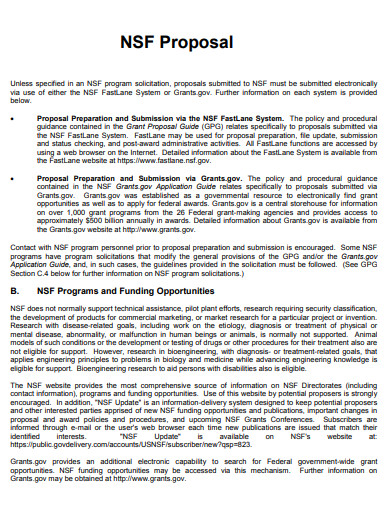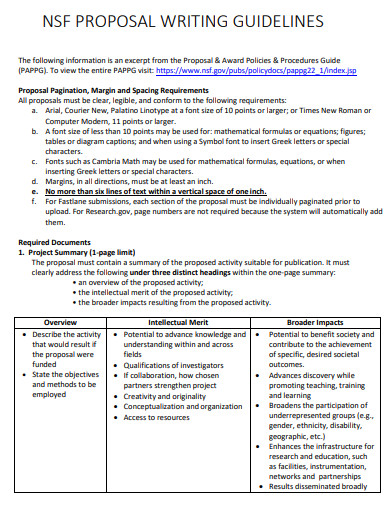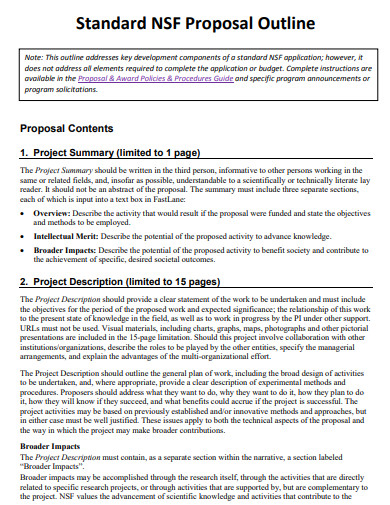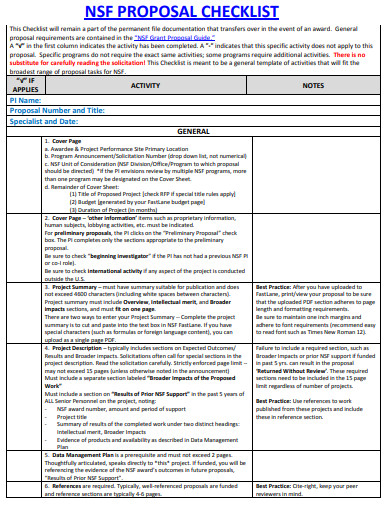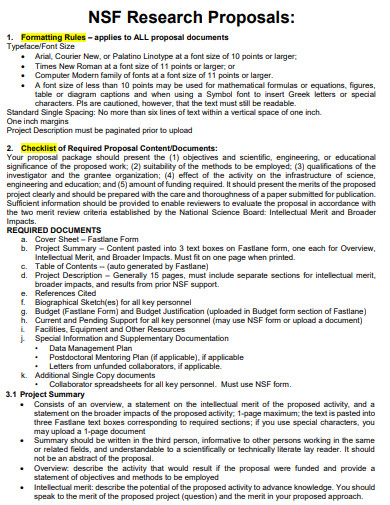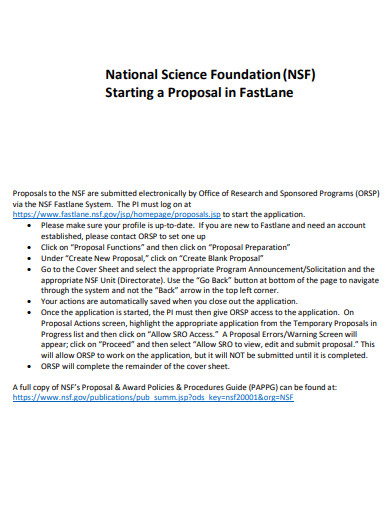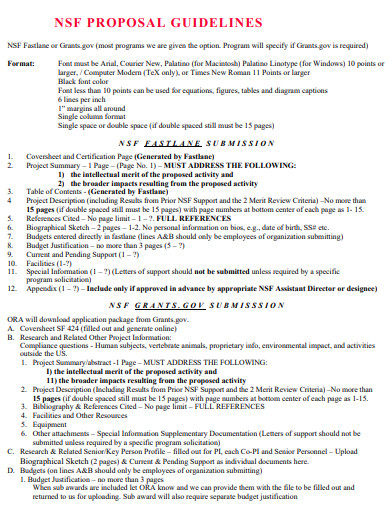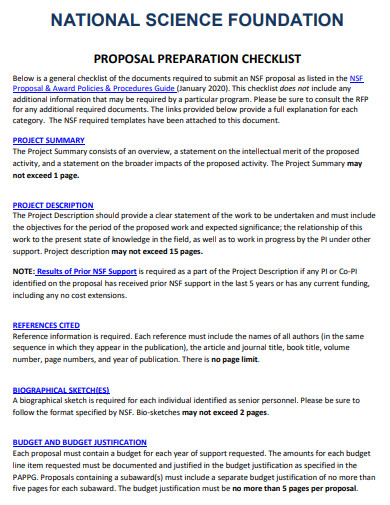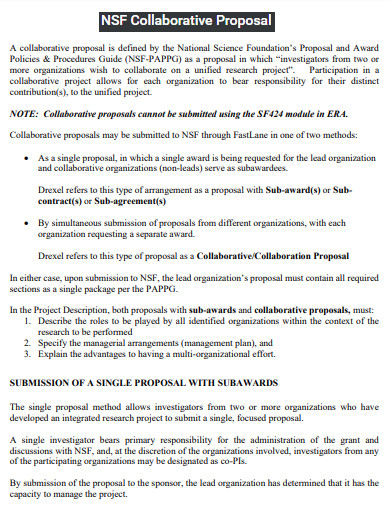The National Science Foundation is a federal agency created in 1950 that has strategic plans to promote the progress of science, enhance national health, prosperity, and welfare as well as secure the national defense of the United States. This agency receives approximately 40,000 proposals every year for various fields such as educational development, research, and training projects. The NSF provides funding for research and education for most fields of science and engineering and establishes cooperative agreements with thousands of colleges, universities, businesses, informal science organizations, and more around the United States.
10+ NSF Proposal Samples
1. NSF Proposal
2. NSF Proposal Writing Guidelines
3. NSF Proposal Outline
4. NSF Proposal Checklist
5. NSF Grant Proposal
6. NSF Review Proposal
7. NSF Research Proposal
8. NSF Starting a Proposal
9. NSF Proposal Guidelines
10. NSF Proposal Preparation
11. NSF Collaborative Proposal
What is an NSF Proposal?
The NSF is a valuable entity in supporting basic research and groups in creating knowledge that could help in transforming the future. This support is the primary driving force of the US economy, improves national security, and develops advanced knowledge to help sustain global leadership. With NSF proposals, the foundation is able to find funding programs to support research on science and engineering topics conducted by United States universities and colleges.
How to Write an NSF Proposal?
The NSF does not only support research on traditional academic areas but also supports “high-risk, high pay-off” ideas, various science projects, and novel collaborations. It also ensures that the research is fully integrated with education so current trainees can be educated to become top scientists and engineers. Like other benefactors, the NSF provides instruction on how an individual should generate, write, and submit their research proposals.
Step 1: Develop your Idea
You can start by generating your idea for a research program that you can develop into applications that can be used as research support in the future. You can develop a preliminary idea by thinking about your interests and strengths, networking, correct approach, and considering picking up old research.
Step 2: Identify the Correct Funding Sources
The next step is identifying the correct funding sources for the research project and getting information and appropriate assistance on major searchable funding opportunities. There are various types of research funding sources you can find or you can search for solicitations or funding announcements.
Step 3: Write your Proposal and Submit
To write your proposal, review the solicitation, understand PI eligibility requirements, determine appropriate development tools, learn the standard proposal elements, and establish your budget plan. You also have to obtain sub-recipient documentation and coordinate pre-award compliance components.
Step 4: Share the Resources of your Research
You can share your research after data collection and data analysis, authoring and journal selection, publishing, and reviewing. Universities can also deposit their data in a repository to facilitate its discovery and preservation.
FAQs
What should an NSF proposal include?
An NSF proposal should include documents for a project summary, project description, list of references, budget plan and justification, facilities and other resources, senior personnel documents, data management plan, and other supplementary documents.
What are the tips for writing a winning NSF proposal?
When writing a winning NSF proposal, consider writing with the reviewer in mind, study the NSF grant criteria, feature the Intellectual Merit and Broader Impact items started in your project summary, and use summary paragraphs to support Intellectual Merit and Broader Impacts.
What are the NSF’s key formatting points?
The key formatting points of NSF are keeping all your margins to at least 1 inch, vertical space of 1 inch with no more than six lines of text, font size at 10 points for Courier New, Palatino Linotype, and Arial fonts, font size at 11 points for Computer Modern and Times New Roman fonts, 10 pints for mathematical formulas and equations, and not using two-column formatting to avoid issues for the reviewers.
The NSF proposal is a document used by researchers to secure research funding for their research projects or research proposal. The NSF is an agency that provides funding for research and educational development in almost all scientific and engineering fields and has cooperative contracts with educational institutions and systems, businesses, science organizations, and other research organizations around the USA.
Related Posts
Title Project Proposal Samples [ Community, School, Student ]
FREE 10+ Product Supply Proposal Samples in MS Word | Google Docs | Apple Pages | PDF
FREE 10+ Health Project Proposal Samples [ Public, Mental, Healthcare ]
FREE 11+ Engineering Project Proposal Samples in PDF | MS Word
FREE 4+ Racing Sponsorship Proposal Samples [ Team, Car, Driver ]
FREE 10+ Nursing Project Proposal Samples [ Community, Health, Clinical ]
FREE 11+ Student Council Proposal Samples in PDF | DOC
FREE 10+ Facilities Management Proposal Samples in MS Word | Google Docs | Apple Pages | PDF
FREE 8+ Joint Venture Proposal Samples [ Commercial, Real Estate, Construction ]
FREE 10+ Scholarship Proposal Samples [ Project, Grant, Sponsorship ]
FREE 10+ Computer Purchase Proposal Samples in MS Word | Google Docs | Apple Pages | PDF
FREE 10+ Network Project Proposal Samples [ Design, Security, Bank ]
FREE 14+ Accounting Proposal Samples in PDF | MS Word
FREE 10+ Church Event Proposal Samples in MS Word | Google Docs | Apple Pages | PDF
FREE 10+ History Proposal Samples [ Dissertation, Thesis, Paper ]

